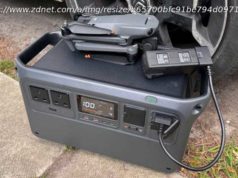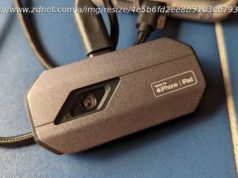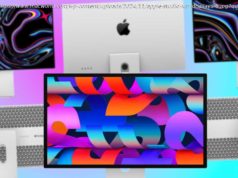The ZenBook 15 leverages tiny bezels to pack some real processing and graphical power into a remarkably small chassis. Performance and battery life are very good for productivity and entry-level gaming, but power users and hardcore gamers should look elsewhere.
Asus has its sights on Dell’s XPS line, using some very small bezels to pack a lot of notebook into unusually small chassis. The ZenBook 15 is the largest in the company’s latest line, and it outdoes the XPS 15 with a display that seems to float in the air and allows for a surprisingly small frame – while still packing in some powerful components.
Our review unit was the only ZenBook 15 configuration that Asus offers: A Core i7-8565U, an Nvidia GeForce GTX 1050 Max-Q, 16GB of RAM, and a 512GB PCIe solid-state drive (SSD) for $1,400. That’s an attractive price for such a well-equipped premium notebook. There aren’t a lot of configurations available, but Asus incorporated some impressive components into the ZenBook 15’s svelte chassis. Is that enough to take on the best of the best?
We could simply refer to our ZenBook 14 review when it comes to describing the ZenBook 15’s build and aesthetic. They’re essentially identical, only the ZenBook 15 is slightly larger thanks to its 15.6-inch display. The larger model has the same Royal Blue with gold trim color scheme, the same textured gold bar above the keyboard (no, that’s not a sound bar a la the Lenovo Yoga C930), and the same iconic Asus concentric swirl on the lid.
The ZenBook 15’s build quality is also identical to its smaller sibling’s, in that Asus tested the notebook against the MIL-STD-810G military standard for robustness. The ZenBook 15 is equally as rigid in its lid and chassis bottom, and it has the same unfortunate level of flex in the keyboard deck. That makes the ZenBook 15 somewhat less rigid and premium than the Dell XPS 15, its biggest rival.
Like the XPS 15, the Asus also has very tiny bezels. They’re 3.0mm along the sides and 4.5mm up top, which is slightly smaller than Dell’s 5.7mm versions, and yet the ZenBook 15 has the webcam above the display where it belongs. Dell can take a lesson here on how to avoid unpleasant up-the-nose camera angles. Those are also much smaller bezels than you’ll find on other 15-inch notebooks like the Apple MacBook Pro 15 and the HP Spectre x360 15.
Thanks to a class-leading screen-to-body ratio of 92 percent, the ZenBook 15 is a very small notebook. It measures just 13.94 inches wide by 8.66 inches deep, which compares to the XPS 15 at 14.06 inches wide and 9.27 inches deep. The MacBook Pro 15 has a slightly smaller 15.4-inch display and comes in at 13.75 inches wide and 9.48 inches deep, while the Lenovo ThinkPad x1 Carbon with its 14-inch display is 12.73 inches wide by 8.54 inches deep.
The ZenBook 15 also shares the ZenBook 14’s ErgoLift hinge, which props up the notebook at a three-degree angle to make for better airflow and audio performance. We found the angle provided comfortable typing as well. The 15-inch model’s hinge is smooth and makes it easy to lift the lid open with a single hand.
The ZenBook 15 isn’t quite so thin as it is small. It’s 0.70 inches thick, compared to the XPS 15 at 0.66 inches thick at the rear and the MacBook Pro 15 at 0.61 inches. The Asus weighs 3.73 pounds, making the XPS 15 significantly heavier at up to 4.5 pounds and the MacBook Pro 15 only slightly heavier at 4.02 pounds.
As with the ZenBook 14, Asus packed some good connectivity into the ZenBook 15. In fact, the ports are identical, including a USB-A 3.1 port, a USB-A 2.0 port, and a USB-C 3.1 Gen 2 port to go along with a full-size HDMI connection, a 3.5mm combo audio jack, and a microSD card reader. Once again, there’s no Thunderbolt 3 support, which is a real disappointment. Wireless connectivity is provided by 2×2 MU-MIMO 802.11ac Wi-Fi and Bluetooth 5.0.
The ZenBook 15 sports a typical island keyboard with black chiclet keys and three levels of consistent backlighting. It has a solid 1.4mm of travel, and we found the mechanism just the tiniest bit too spongy. It’s a good keyboard, but it’s quite not as precise as the snappier version on the XPS 15. It falls well behind the Lenovo ThinkPad X1 Extreme.
The touchpad is large and works well, with Microsoft Precision support and a light button click that’s not too loud in a quiet room. It’s easily the equal of the XPS 15, but it falls behind the gargantuan and Force Touch-enabled touchpad on the MacBook Pro 15.






